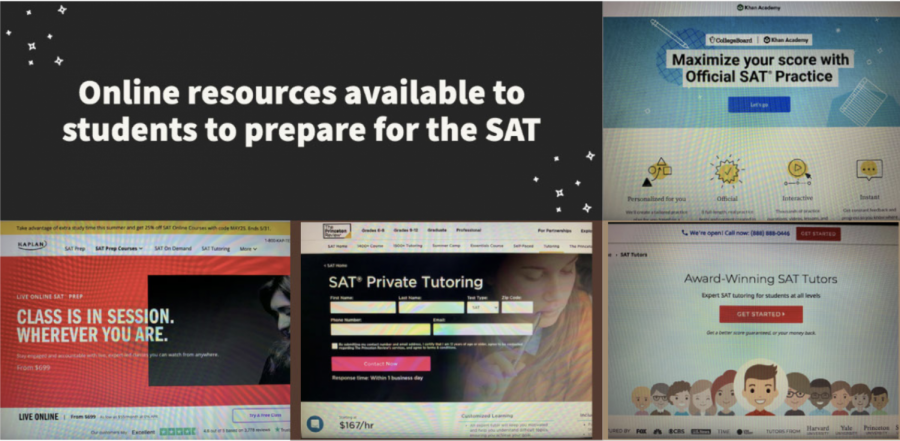The SAT perpetuates unjust educational system
Students who have the financial ability to do so often utilize online resources that may cost upwards of hundreds of dollars for SAT tutoring with the promise of improved scores.
The Scholastic Aptitude Test, or SAT, allows college admission officers to better evaluate the knowledge of students and their ability to succeed in a college environment.
Well, not really.
The very history of the SAT is one rooted in racism and classism that exemplifies the racial and class gaps that exist within this country.
According to information from the Atlantic, the SAT was created by Princeton alum and eugenicist Carl Brigham in 1926. As he claimed in his book, the test aimed to prove the racial superiority of white Americans. While the modern test does not deliberately serve to disenfranchise minorities, its very structure does exactly that.
The SAT tests students on knowledge that they are expected to have learned throughout high school, but in a system that disproportionately supports the success of affluent white students, poor nonwhite schools are put at a disadvantage before even opening the test. According to U.S. News, on average, poor nonwhite students receive $2,600 less yearly educational funding per student than affluent white students.
The test essentially becomes a pay-to-win system as already wealthy students often use outside help such as test prep courses and SAT tutors to further improve their test scores, leaving those who cannot afford such resources behind. Additionally, the ability to take the test as many times as students would like simply widens the class gap. While some students have the opportunity to take the test three, four or even five times for a small price of $52, that price tag looks a lot different to students who can only afford to take the test once.
The test essentially becomes a pay-to-win system as already wealthy students often use outside help such as test prep courses and SAT tutors to further improve their test scores, leaving those who cannot afford such resources behind.
— Jared Leonard ’22
All these factors culminate to reinforce the disparities that poorer nonwhite students already face throughout their lives. As these students try their best to receive high scores on the test, the cuntless elements working against them make this task nearly impossible. According to the College Board, 55% of Asian-American and 45% of white test takers scored a 1200 or higher in 2019, while only 12% of Hispanic and 9% of black students received those same scores.
The idea of reforming the SAT to a test that excludes factors including wealth and race seems like a difficult feat, but the idea of doing away with the test as a whole has become a likely possibility in recent years. Some universities, including top schools such as Wake Forest University and the University of Chicago, opted to go test optional multiple years ago and other schools are following in their footsteps. According to FairTest, more than 1,230 colleges and universities have made the SAT and ACT optional for admission in the past decade. The COVID-19 pandemic impacted SAT testing greatly and as more and more universities look at scores with less weight, the test may very well become obsolete in the not so distant future.
The SAT clearly does not adequately depict the merit or college preparedness of students and schools should instead put more weight on other, more credible factors. Colleges should take a more indepth look at how well students challenged themselves in their courses in high school and their letters of recommendation to understand who students are, rather than their ability to select the correct answer to multiple choice questions that are actively working against them.

There are many lesser-known sports that students participate in at Staples High School.
“I feel like a lot of people don't know this,” Paper Opinions...

There are many lesser-known sports that students participate in at Staples High School.
“I feel like a lot of people don't know this,” Paper Opinions...



















































